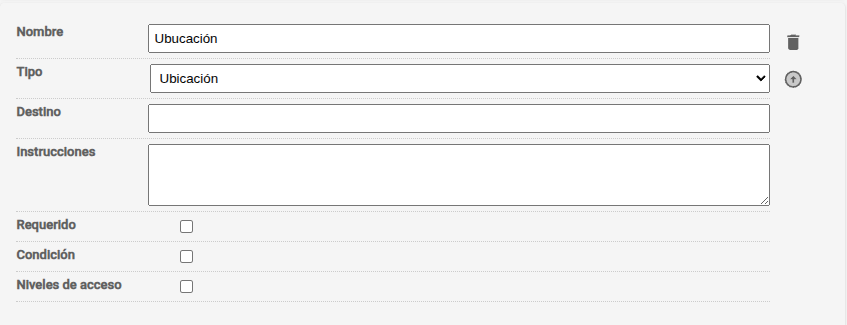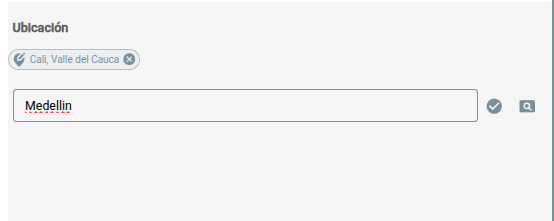Location Field
The Location field allows georeferencing resources by associating them with physical places or administrative divisions, supporting multiple locations with different levels of precision.
Field Structure
Section titled “Field Structure”Name: Field name
- Description: Unique and descriptive identifier for the field.
- Example:
"Location","Place of origin".
Field type: Location
- Description: Allows associating the resource with one or more physical places or administrative divisions.
- Example: Field to record the location of an event, document, object, etc.
Destination:
- Description: Location or relation where the value is stored (e.g. metadata, database).
- Example:
metadata.location.
Instructions:
- Description: Guide for the user on how to use the field.
- Example: “Select or search for the corresponding location.”
Required:
- Description: Indicates if the field is mandatory (
Yes) or optional (No). - Example:
No(can be left empty).
Condition:
- Description: Rules for displaying/editing the field (e.g. depending on another field).
- Example: “Visible only if
Resource type = Event.”
Access levels:
- Description: Permissions required to interact with the field.
- Example:
Administrator, Editor(only these roles can modify it).

Practical example
Section titled “Practical example”Scenario: Document the relevant locations for a research project:
-
Main location:
- Name: Universidad del Valle
- City: Cali
- Department: Valle del Cauca
- Country: Colombia
-
Study area:
- Name: Farallones National Natural Park
- Coordinates: 3.3547° N, 76.7890° W
Visualization
Section titled “Visualization”Locations are displayed with their complete information and on an interactive map when coordinates are available.



